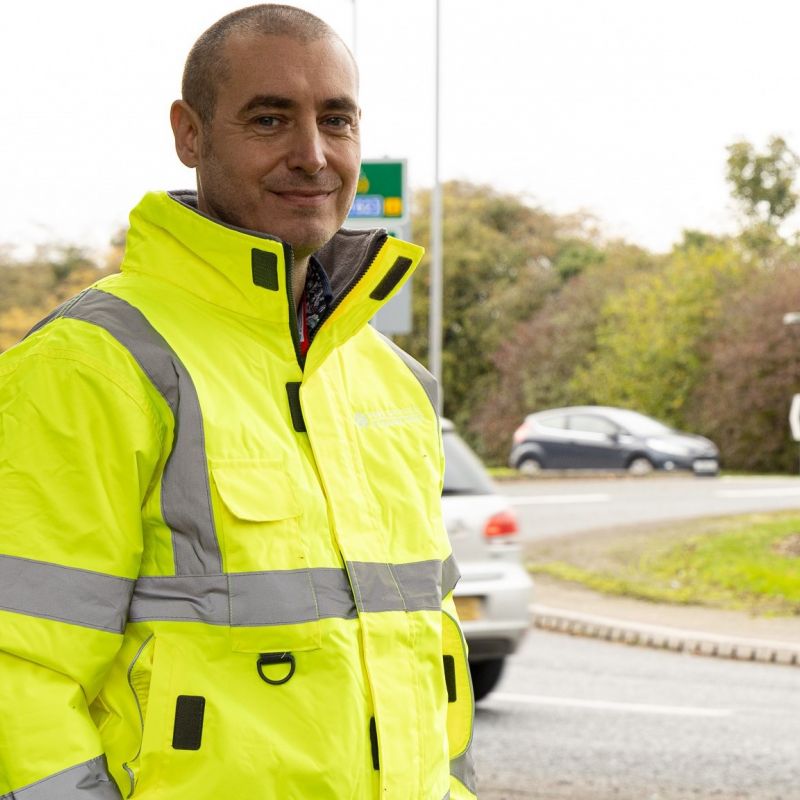Drivers in the East Riding are being made aware street lights along two main roads are to be switched off this week as part of a national pilot project to save energy and cut carbon emissions along UK roads.
East Riding of Yorkshire Council was awarded £3.3m to study more environmentally friendly ways of lighting main roads in the future, as more efficient car headlights will make some lampposts redundant.
The project is part of ADEPT Live Labs 2: Decarbonising Local Roads in the UK, a three-year, UK-wide £30 million programme funded by the Department for Transport that aims to make the local highway network much greener.
East Riding of Yorkshire Council’s street lighting scheme is one of seven projects funded across the UK as part of the programme.
Each project is led by different local authorities working alongside groups of councils, commercial and academic partners, each looking at a different aspects of reducing carbon dioxide emissions and saving energy on Britain’s roads such as the design and construction of highways and the materials used.
The East Riding is leading a group of nine other authorities in England, Wales, Scotland and Northern Ireland on the Live Labs 2 street lighting project. Each authority is carrying out its own studies to feed into the scheme, all with the aim of setting a new British Standard in road lighting, which has remained the same for years.
From Friday 4 April, motorists will notice that lights won’t be switched on at night along two stretches of main road as part of a trial carried out and led by East Riding of Yorkshire Council.
The lights will be switched off along:
- the A164 from the Humber Bridge to Willerby and from Cottingham to Skidby,
- the A1079 from Dunswell Roundabout to Ennerdale Bridge.
The trial will run for 12 months and the behaviour of drivers, cyclists and pedestrians will be closely monitored.
Street lights in residential areas are not included in the scheme and will not be affected.
If the trial is proved successful, it could lead to more than a million street lights being switched off in out-of-town areas across the country, saving tonnes of carbon and millions of pounds of public money.
In the past year, the council has installed more than 80km of new highly reflective white lines, more than 5,000 solar powered illuminated road studs and more than 140 square metres of new, highly reflective signs on the A1079 and A164.
All are designed to give drivers all the visual indications they need to navigate the road without the need for traditional overhead lighting.
Karl Rourke, the council’s service manager for street lighting, who is leading the project, said: “The East Riding is at the forefront of this innovative project which could lead to a massive reduction in carbon and energy on UK roads.
“We are now at a stage where we can turn off the now not-needed streetlights along two routes, knowing that we can do it safely.
“To make sure the move is being done as safely as possible, we have created and tested a world-first artificial intelligence system that monitors driver behaviour and safety at key points along these two roads.
“The system uses thermal imaging cameras to collect data and tells us how safely drivers are behaving under daylight and nighttime or poor visibility conditions.
“This AI powered system is now active on both routes, and together with physical monitoring, is collecting data and is continuously checking safety for all road users as we switch away from street lighting to the new replacement technologies.”
The section of road along the A1079 will retain some lighting as the council will be switching over from standard street lighting to a new and innovative system of pedestrian-only lighting in the village of a Hayton, near Pocklington, to light the active travel route on both sides of the road.
The council is working with Sheffield University and the Institute of Lighting Professionals as part of the trial to discover new, alternative products and test their effectiveness.
Lighting the way
There are around 600 street lights in the East Riding trial areas.
Each light uses 100 tonnes of CO2 during its lifetime.
Twenty street lights use the equivalent amount of carbon to drive a family car to the moon.
Currently 80% of road accidents happen during daytime hours.


